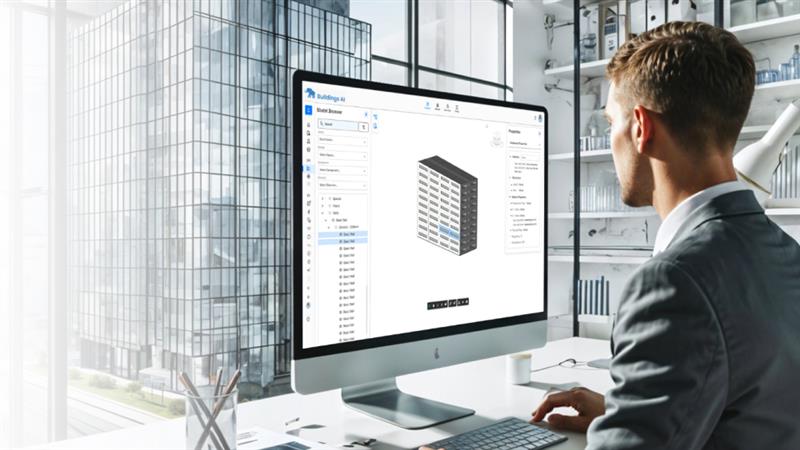Written by Chaitanya Rane
Friday, January 24, 2020
The future is here - Autonomous HVAC CFD
By
Chaitanya Rane


Pune, India - The simulationHub team today announced the future of HVAC system design using thermal fluid simulation, cloud computing, and machine learning, using a newly developed app, Autonomous HVAC CFD. This technology preview software application demonstrates to the customers the capability of simulationHub platform to perform thousands of HVAC CFD simulations autonomously, explore the entire design space and evaluate the occupant thermal comforts for multiple HVAC design configurations and several thermal load scenarios.

A Sankey diagram showing all the 210 simulations performed for the technology preview
“For more than half a decade, we have intended to create apps that empower the designer to use CFD as an integral part of design processes. Autonomous HVAC CFD is the realization of that vision for the HVAC industry” said Praveen Kumar, simulationHub’s Product Manager. “With the introduction of Autonomous Valve CFD three years ago, we revolutionized the valve industry with a virtual flow loop alternative. The new app aims to fill the void for an upfront CFD tool in the HVAC domain”
“Designers need better system evaluation tools than just an Excel spreadsheet. ” Sandip Jadhav, CEO, simulationHub. “The world is facing a big challenge of climate change. The need of the hour is to produce sustainable HVAC design. The HVAC design process is inherently multi-objective design process wherein objective span over space constraint, thermal comfort, odor, humidity, sustainability, cost, ventilation, noise. Therefore, we need accurate, fast and affordable apps that help the designer to converge to optimum design in the shortest possible time. Autonomous HVAC CFD takes this challenge head-on. In just a couple of hours, you can evaluate thousands of designs using simple laptops or tablets as the app uses cloud computing to crunch the numbers. We have made clever use of machine learning algorithms to process the BIM model and automate the complete CFD process.”

A radar chart illustrating the multi-objective design process involved in HVAC system designs
Autonomous HVAC CFD workflow

The app has a simple 4 step workflow to set up and execute the simulations. It is a web app that works from Chrome or Mozilla browser. That means you can run the application from any light laptop, tablet or desktop running Windows, Macintosh, Android or Linux. The total time setup time is less than 15 minutes and within a couple of hours, users will be able to see results in the web browser.

3D CAD Model of the office using Autodesk Revit

Office spaces divided into 3 zones
In this preview, you can try your hand at performing a study for an office space based in New York. The 3D model for this office space has been created in Autodesk Revit and is available on the app. This 3D model consists of 7 spaces. Each of these spaces has heat loads either as human manikins or electronic equipment or a combination of both. Additionally, 4 spaces have a glass facade on the east to encounter solar loading effects in the office space. The office also has a special server room. All the components are modeled as close as their real-life counterparts.
The 7 spaces have been divided into 3 zones. These zones have been classified based on the HVAC systems used for thermal comfort.
You can select from the 5 design configurations available for your study under the ‘Airside System’ section under the ‘Home’ tab. The Design Configurations have been selected to cover the most popular types of AHU systems. Here are the ones used in the technology preview:

5 design configurations and the diffusers used in each one of them
Further, in the ‘Scenario’ tab, you can choose from 6 different scenarios to evaluate the thermal comfort in. The scenarios are selected based on the climatic and seasonal changes. They also consider the variations in the occupant density. Here are the scenarios available in the preview:

6 scenarios selected based on seasonal, climatic and occupant density in the office
So, with 5 design configurations, 6 scenarios, and 7 spaces, you can perform a total of 210 CFD simulations in the technology preview and analyze the thermal comfort for all these simulations.
Using the simulated data, the app provides various forms of qualitative results that can be used to investigate the thermal comfort of a given space for a given system and a scenario. Here are some examples of the results provided in the technology preview:

Thermal comfort plot for the Bullpen

PPD surface plot in the CEO’s Office

PMV comfort cloud in the Pantry

Flowline animation for the UFAD system
With the application’s ability to perform CFD simulations on a large scale, evaluate comprehensive sets of HVAC systems configurations and scenarios simultaneously, it brings a state-of-the-art tool for the HVAC industry full of potential and benefits.
Start FREE Trial
The technology preview is available for free on our website until March 31, 2020. Please sign into the simulation CFD platform to try the hands-on experience of the Autonomous HVAC CFD application. We look forward to your constructive feedback and comments about our new product.
Sandip Jadhav will be participating in the 72nd International Air-Conditioning, Heating, Refrigerating Exposition i.e. AHR Expo, to be hosted at the Orange County Convention Center in Orlando, Florida from Mon, 3 Feb 2020 – Thu, 6 Feb 2020. It will be a great opportunity to meet people from the HVAC community and do live demos.
Comments
Recent posts


